
Euphorbia is a very large and diverse genus of flowering plants, commonly called spurge, in the spurge family (Euphorbiaceae). "Euphorbia" is sometimes used in ordinary English to collectively refer to all members of Euphorbiaceae, not just to members of the genus. Some euphorbias are commercially widely available, such as poinsettias at Christmas. Some are commonly cultivated as ornamentals, or collected and highly valued for the aesthetic appearance of their unique floral structures, such as the crown of thorns plant. Euphorbias from the deserts of Southern Africa and Madagascar have evolved physical characteristics and forms similar to cacti of North and South America, so they are often incorrectly referred to as cacti. Some are used as ornamentals in landscaping, because of beautiful or striking overall forms, and drought and heat tolerance.

Euphorbia esula, commonly known as green spurge or leafy spurge, is a species of spurge native to central and southern Europe, and eastward through most of Asia north of the Himalaya to Korea and eastern Siberia.

Euphorbia myrsinites, the myrtle spurge, blue spurge, or broad-leaved glaucous-spurge, is a succulent species in the spurge family Euphorbiaceae.
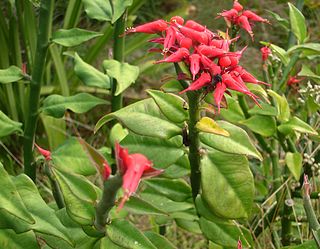
Euphorbia tithymaloides is a perennial succulent spurge. An erect shrub, the plant is also known by the scientific name Pedilanthus tithymaloides. However, the genus Pedilanthus has been submerged into the genus Euphorbia, and is more correctly known by its new name.
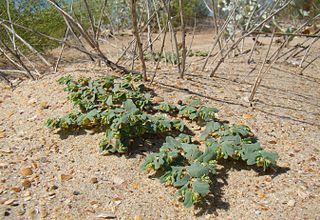
Euphorbia peplis, the purple spurge, is a species of Euphorbia, native to southern and western Europe, northern Africa, and southwestern Asia, where it typically grows on coastal sand and shingle.

Euphorbia lathyris, the caper spurge or paper spurge, is a species of spurge native to southern Europe, northwest Africa, and eastward through southwest Asia to western China.

Euphorbia corollata is an herbaceous perennial plant in the family Euphorbiaceae that is native to North America. A common name for the species is flowering spurge. It has a milky sap that can cause skin and eye irritation in some people. It grows up to 1 m (3 ft) tall, with smooth stems and light green leaves arranged alternately or in whorls. Leaves are about 10 mm wide and 75 mm (3 in) long. Each stem terminates in a panicle 20 to 25 mm across. Flowers are about 6 mm across and consist of one pistillate and several staminate flowers surrounded by five white bracts - not petals but formed from the involucre at the base of the flowers. Flowering spurge blooms from June to September.

The Euphorbiaceae, the spurge family, are a large family of flowering plants. In common English, they are sometimes called euphorbias, which is also the name of a genus in the family. Most spurges such as Euphorbia paralias are herbs, but some, especially in the tropics, are shrubs or trees, such as Hevea brasiliensis. Some, such as Euphorbia canariensis, are succulent and resemble cacti because of convergent evolution. This family occurs mainly in the tropics, with the majority of the species in the Indo-Malayan region and tropical America a strong second. A large variety occurs in tropical Africa, but they are not as abundant or varied as in the two other tropical regions. However, the Euphorbiaceae also have many species in nontropical areas such as the Mediterranean Basin, the Middle East, South Africa, and the Southern United States.

Euphorbia paralias, the sea spurge, is a species of Euphorbia, native to Europe, northern Africa, and western Asia.
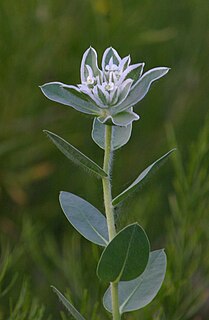
Euphorbia marginata is a small annual in the spurge family.
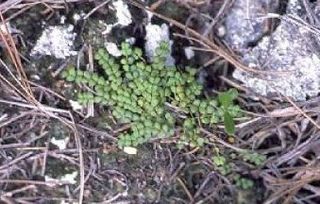
Euphorbia deltoidea is a species of flowering plant endemic to Florida in the United States. The taxonomy of the plant is difficult, with some authorities dividing it into four subspecies and some into three; also, it is frequently listed as a member of the old genus Chamaesyce. One subspecies, ssp. deltoidea, is a federally listed endangered species called deltoid spurge. It is found only in Miami-Dade County. Another subspecies, ssp. adhaerens, is often included with it under the name deltoidea instead of separately, making it difficult to keep count of how many endangered plants there are. This is generally dealt with by placing the "endangered species" label on any taxon within the species that is limited to Miami-Dade County, however many names they may have.

Euphorbia commutata, the tinted woodland spurge, is an annual plant in the family Euphorbiaceae. It is native to Eastern North America where it is found in rich, calcareous forests and rock outcrops. It has small green flowers in the spring, so it is easily overlooked.

Euphorbia pubentissima, commonly called the southeastern flowering spurge or false flowering spurge, is a species of plant in the spurge family. It is native to the Southeastern United States where it is found in areas of sandy, open woodlands. It produces small flowers surrounded by white involucral gland appendages from spring to fall.

Euphorbia bombensis, commonly called the southern seaside spurge, is a species of flowering plant in the spurge family. It found in warm coastal areas of North America, South America and the islands of the Caribbean. In the Southeastern United States, its natural habitat is the open sands of dunes, preferring areas with little competition in areas behind the foredune.

Euphorbia missurica, commonly called prairie sandmat, or Missouri spurge, is a species of flowering plant in the spurge family (Euphorbiaceae). It is native to North America, where it is found primarily in area of the Great Plains. Its natural habitat is in dry, often calcareous areas, including glades, bluffs, and open woodlands.

Euphorbia virgata, commonly known as leafy spurge, wolf's milk leafy spurge, or wolf's milk is a species of spurge native to Europe and Asia, and naturalized in North America, where it is an invasive species.
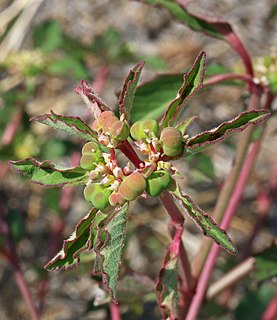
Euphorbia davidii, known as David's spurge or toothed spurge, is a species of flowering plant in the spurge family Euphorbiaceae.

Euphorbia ouachitana, commonly called Ouachita spurge, is a species of flowering plant in the spurge family (Euphorbiaceae). It is native eastern to North America, where its range is restricted to the Ouachita and Ozark Mountains, with disjunct populations east in the Nashville Basin. Its typical natural habitat is semi-open forests and woodlands, usually associated with thin soils underlain by shale or limestone.

Euphorbia mesembryanthemifolia, commonly called seaside spurge, is a species of flowering plant in the spurge family (Euphorbiaceae). It is native to the Western Hemisphere, where it is found in coastal areas from Florida in the United States south to Colombia and Venezuela, as well as in Bermuda and the Caribbean. Its natural habitat is on beaches and rocky shores.

Nance Wood is a woodland Site of Special Scientific Interest (SSSI) near Portreath, west Cornwall. The site was first notified in 1951 for its almost pure dwarf, sessile oak coppiced woodland, good bryophyte flora and Irish spurge, which is found in only two localities in Britain.




















